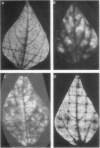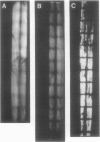Abstract
The extent and occurrence of water stress-induced “patchy” CO2 uptake across the surface of leaves was evaluated in a number of plant species. Leaves, while still attached to a plant, were illuminated and exposed to air containing [14C]CO2 before autoradiographs were developed. Plant water deficits that caused leaf water potential depression to −1.1 megapascals during a 4-day period did result in heterogenous CO2 assimilation patterns in bean (Phaseolus vulgaris). However, when the same level of stress was imposed more gradually (during 17 days), no patchy stomatal closure was evident. The patchy CO2 assimilation pattern that occurs when bean plants are subjected to a rapidly imposed stress could induce artifacts in gas exchange studies such that an effect of stress on chloroplast metabolism is incorrectly deduced. This problem was characterized by examining the relationship between photosynthesis and internal [CO2] in stressed bean leaves. When extent of heterogenous CO2 uptake was estimated and accounted for, there appeared to be little difference in this relationship between control and stressed leaves. Subjecting spinach (Spinacea oleracea) plants to stress (leaf water potential depression to −1.5 megapascals) did not appear to cause patchy stomatal closure. Wheat (Triticum aestivum) plants also showed homogenous CO2 assimilation patterns when stressed to a leaf water potential of −2.6 megapascals. It was concluded that water stress-induced patchy stomatal closure can occur to an extent that could influence the analysis of gas exchange studies. However, this phenomenon was not found to be a general response. Not all stress regimens will induce patchiness; nor will all plant species demonstrate this response to water deficits.
Full text
PDF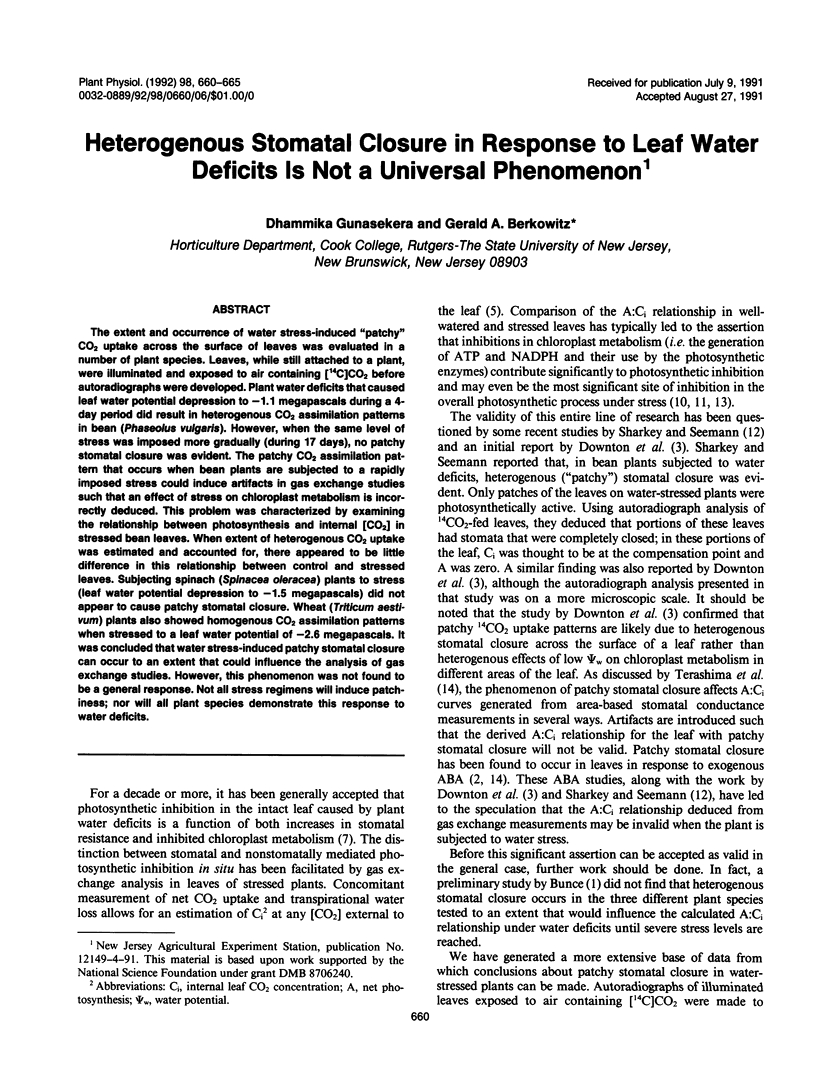
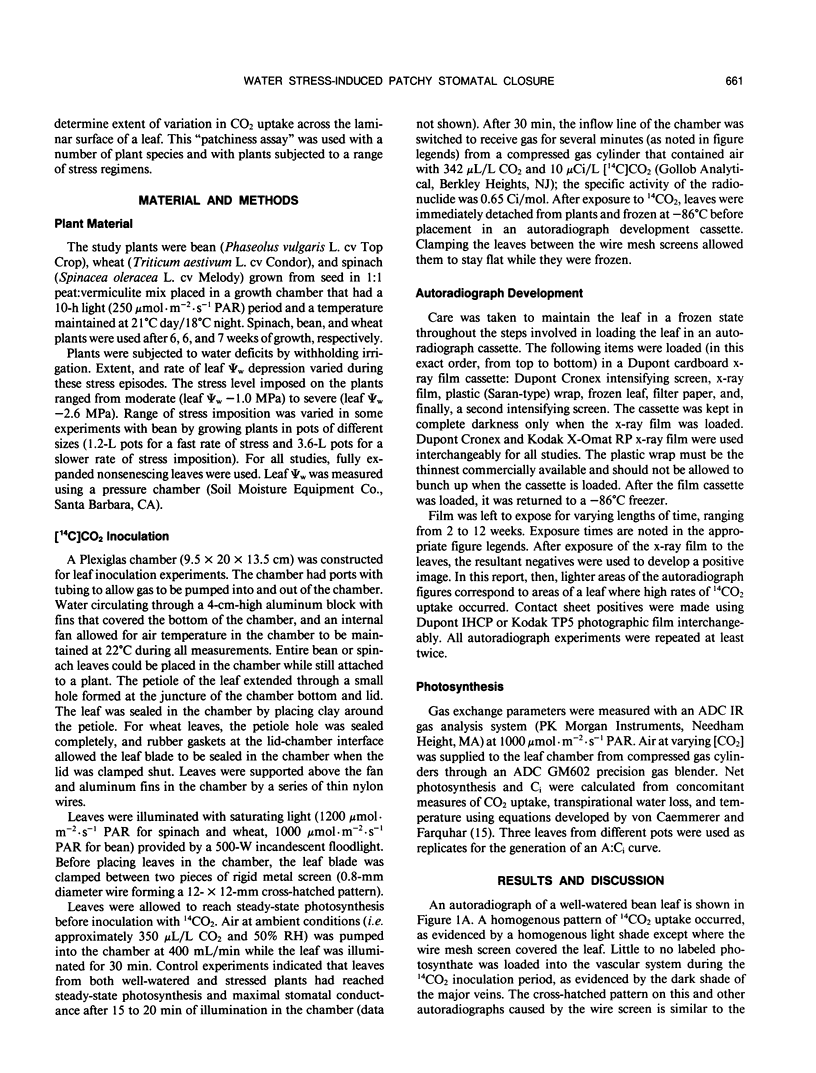

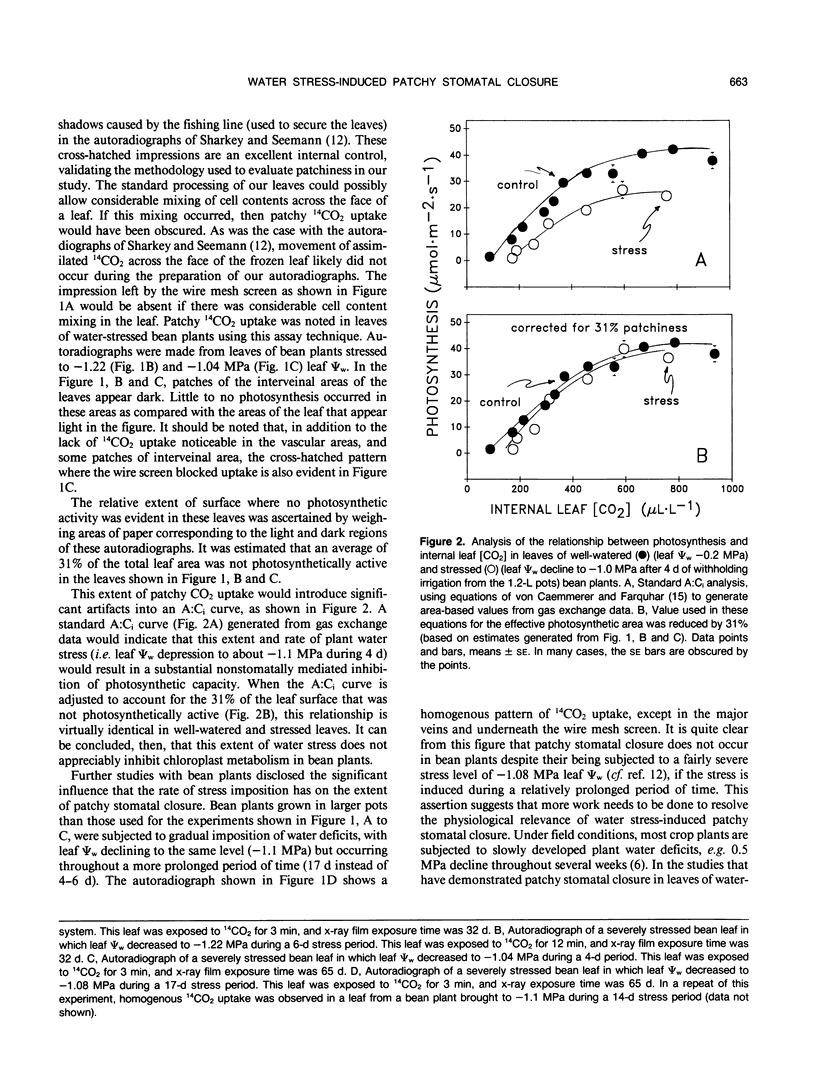
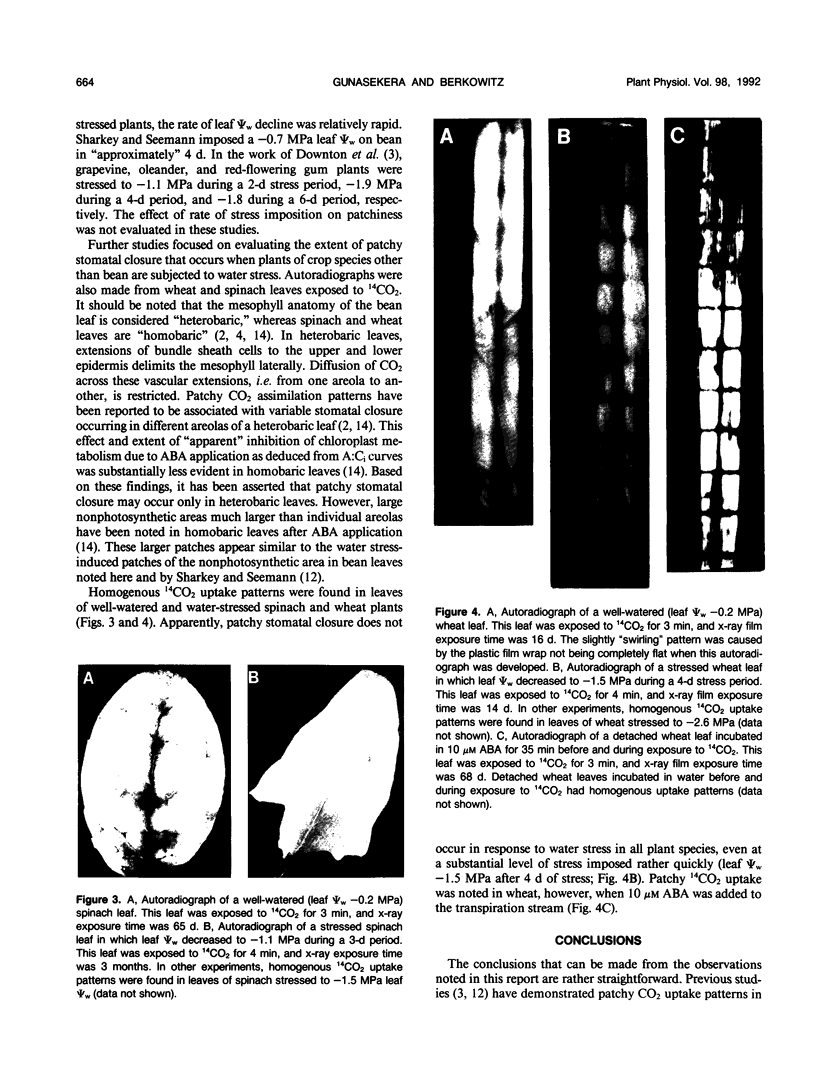
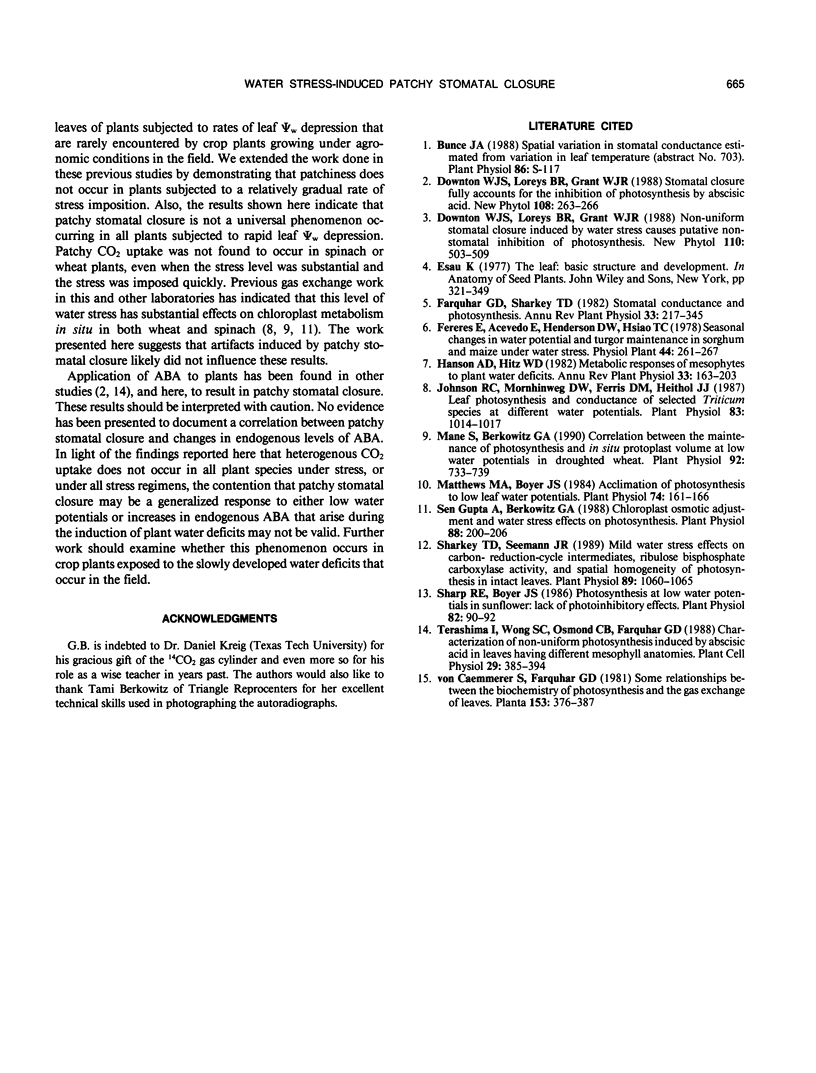
Images in this article
Selected References
These references are in PubMed. This may not be the complete list of references from this article.
- Gupta A. S., Berkowitz G. A. Chloroplast osmotic adjustment and water stress effects on photosynthesis. Plant Physiol. 1988 Sep;88(1):200–206. doi: 10.1104/pp.88.1.200. [DOI] [PMC free article] [PubMed] [Google Scholar]
- Johnson R. C., Mornhinweg D. W., Ferris D. M., Heitholt J. J. Leaf photosynthesis and conductance of selected triticum species at different water potentials. Plant Physiol. 1987 Apr;83(4):1014–1017. doi: 10.1104/pp.83.4.1014. [DOI] [PMC free article] [PubMed] [Google Scholar]
- Matthews M. A., Boyer J. S. Acclimation of photosynthesis to low leaf water potentials. Plant Physiol. 1984 Jan;74(1):161–166. doi: 10.1104/pp.74.1.161. [DOI] [PMC free article] [PubMed] [Google Scholar]
- Santakumari M., Berkowitz G. A. Correlation between the Maintenance of Photosynthesis and in Situ Protoplast Volume at Low Water Potentials in Droughted Wheat. Plant Physiol. 1990 Mar;92(3):733–739. doi: 10.1104/pp.92.3.733. [DOI] [PMC free article] [PubMed] [Google Scholar]
- Sharkey T. D., Seemann J. R. Mild water stress effects on carbon-reduction-cycle intermediates, ribulose bisphosphate carboxylase activity, and spatial homogeneity of photosynthesis in intact leaves. Plant Physiol. 1989 Apr;89(4):1060–1065. doi: 10.1104/pp.89.4.1060. [DOI] [PMC free article] [PubMed] [Google Scholar]
- Sharp R. E., Boyer J. S. Photosynthesis at low water potentials in sunflower: lack of photoinhibitory effects. Plant Physiol. 1986 Sep;82(1):90–95. doi: 10.1104/pp.82.1.90. [DOI] [PMC free article] [PubMed] [Google Scholar]



